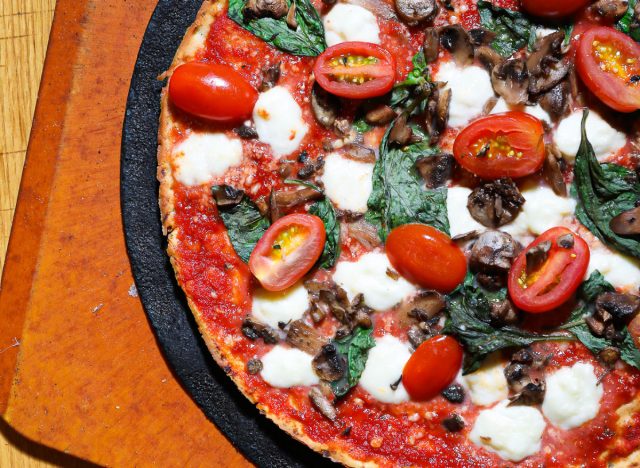An electrolyte imbalance may also contribute to brain fog. To avoid or mitigate brain fog, ease into the new diet, hydrate well, get plenty of rest and consider an electrolyte supplement.
Key Nutrients to Consider
The Keyto diet provides plenty of nutrients, but you may need to consider supplements for some nutrients lacking in the Keyto diet.
Calcium
There are plenty of Keyto-friendly foods that contain calcium, including spinach, leafy greens, fortified unsweetened almond milk, unsweetened Greek yogurt and certain cheeses, including parmesan and cheddar cheese. However, the calcium in green vegetables is not as well-absorbed as that from other foods. For men and women between the ages of 19 to 50, the federal government recommends consuming 1,000 milligrams of calcium daily. For women ages 51 to 70, the recommendation increases to 1,200 milligrams a day. Men aged 70 and above are recommended to consume 1,200 milligrams daily. While you can get plenty of calcium on the Keyto diet, there’s no harm in consulting with your health care provider or a registered dietitian about whether you should take calcium supplements, Wu says.
Potassium
You might be able to get the potassium you need on the Keyto diet. The federal government recommends that men aged 19 and older consume 3,400 milligrams of potassium daily. Women aged 19 and above should get 2,600 milligrams of potassium daily. Women who are pregnant or lactating require higher amounts. You can eat many high-potassium foods on the Keyto diet, including avocados, leafy greens and berries. On the other hand, potatoes and bananas are both “red” foods to be avoided on the Keyto plan, and both are rich sources of potassium.
Fiber
The U.S. Department of Agriculture recommends getting 14 grams of fiber per 1,000 calories you consume. With its emphasis on fruits and vegetables, getting enough fiber shouldn’t be a problem on the Keyto diet, Wu says. Fiber-rich foods recommended on the Keyto plan include coconut flour, leafy greens such as collard greens, Hass avocado, eggplant and chia or flax seeds.
Vitamin D
The federal government recommends men and women between the ages of 19 and 70 consume 70 micrograms of vitamin D daily. Many foods contain vitamin D in the Keyto diet, including spinach, leafy greens, sardines, salmon, almond milk, Greek yogurt and cheese. While the diet includes plenty of foods that contain vitamin D, there’s nothing wrong with consulting your health care provider or a registered dietitian about taking a supplement.
Food Components Often Over-Consumed
Added Sugar
Since the Keyto diet takes a Mediterranean-style approach by recommending fresh berries and low-sugar dark chocolate for dessert, avoiding added sugar shouldn’t be a problem.
Saturated Fat
Keyto is a high-fat diet, but by advocating for healthy fats such as olive oil and avocados, you should not have to worry about consuming too many saturated fats.
Sodium
This diet recommends avoiding processed foods, so keeping your sodium intake in check should not be a problem as long as you don’t overdo it on processed meats and high-sodium cheeses.


